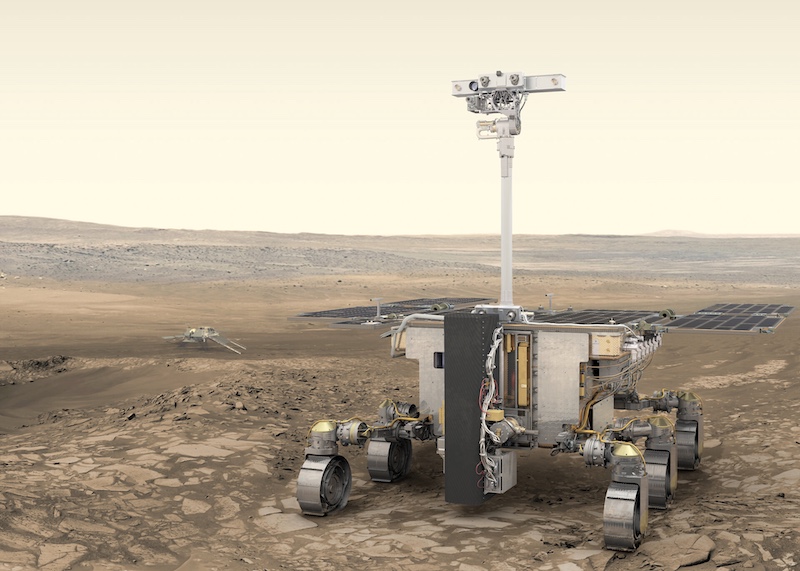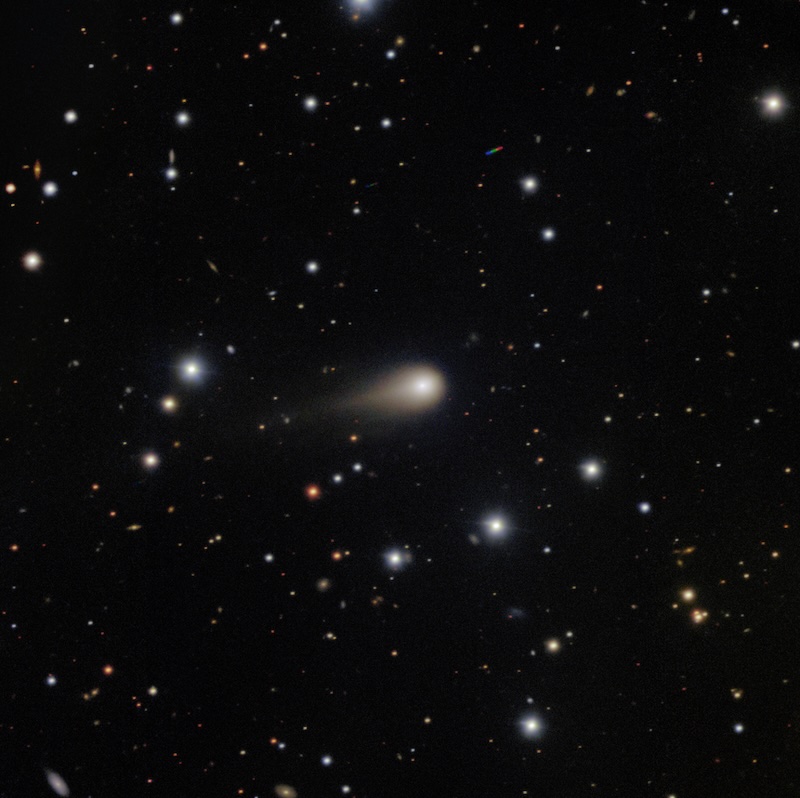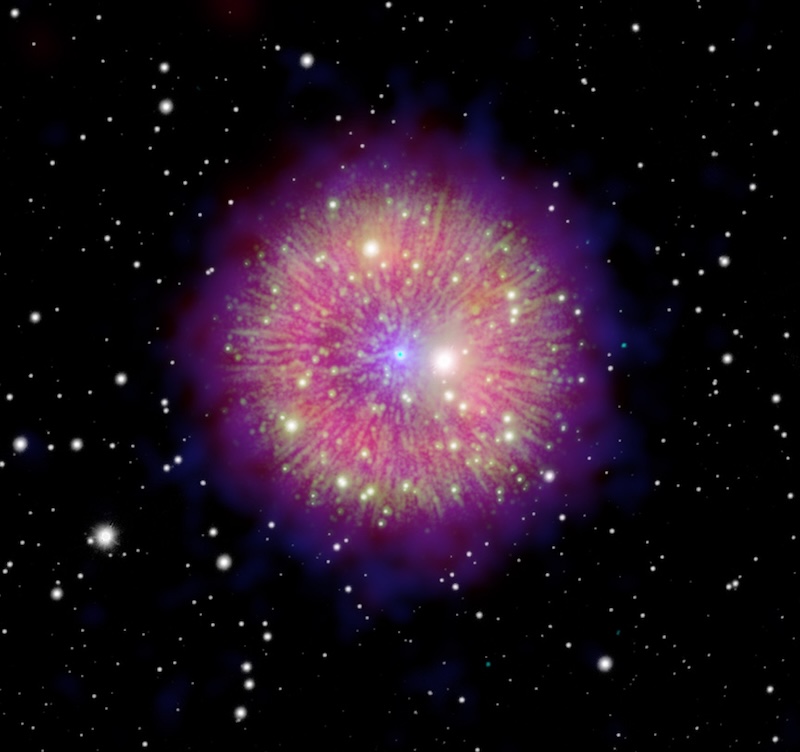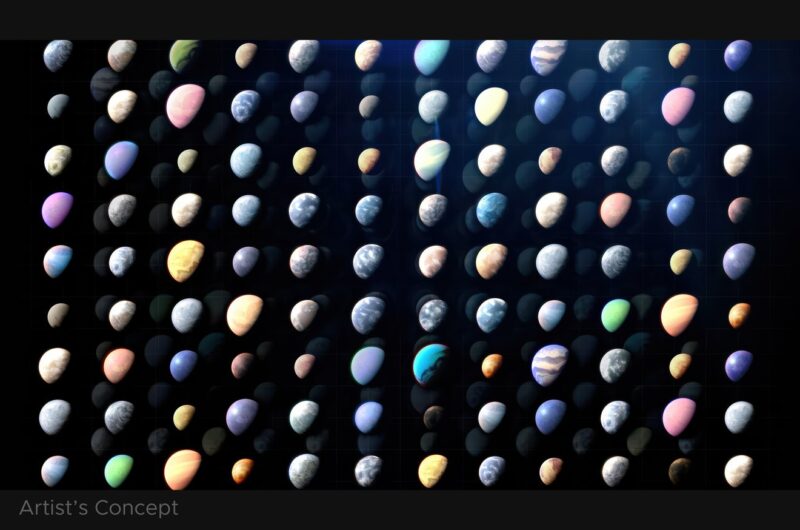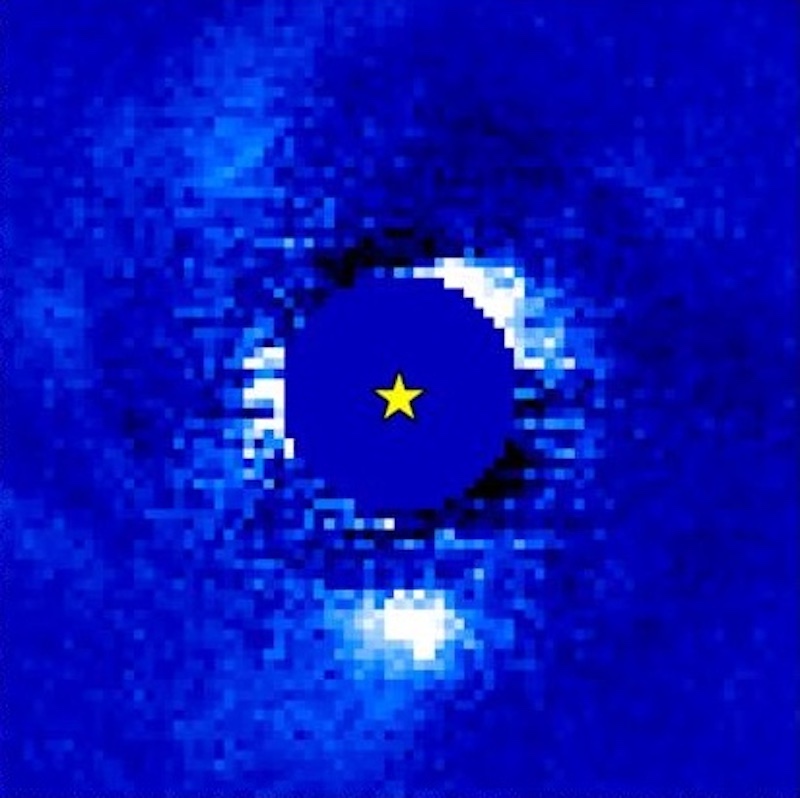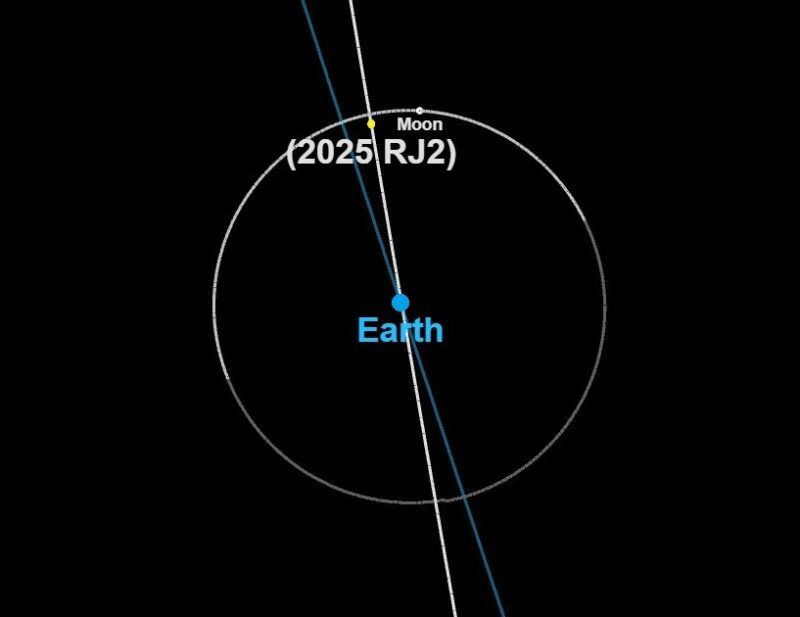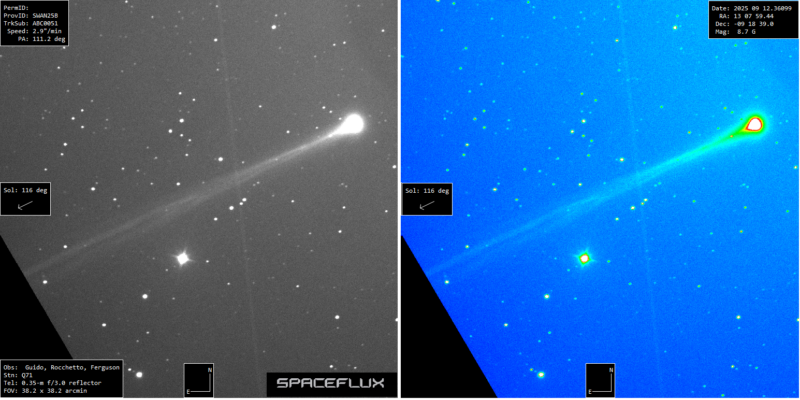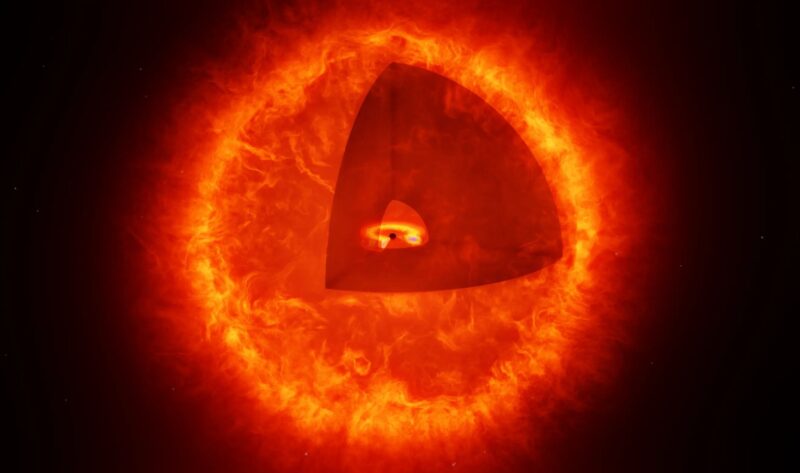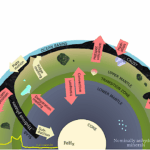View larger. | Artist’s illustration of the Rosalind Franklin rover. It will launch in 2028 and search for evidence of ancient life in the Oxia Planum region on Mars. A
EarthSky9- Page
Astrophysicist and pianist Amir Siraj is lead author on the new work, suggesting an unseen Planet Y, hidden in the far reaches of our solar system. He is currently studying
A deep image of interstellar comet 3I/ATLAS captured by the Gemini Multi-Object Spectrograph (GMOS) on the Gemini South telescope at Cerro Pachón in Chile. The image shows the comet’s broad
Many astronomers think Pa 30, a nebula in Cassiopeia (above), is the remnant of supernova 1181. A merger of 2 white dwarf stars created the supernova and resulting remnant. This
NASA has confirmed 6,000 exoplanets! NASA published a longer version of this story on September 17, 2025. Edits by EarthSky. 6,000 exoplanets! NASA announced on September 17, 2025, that its
View larger. | NASA’s Curiosity rover found these pure sulfur crystals on May 30, 2024, after it drove over and broke open a rock. Now, a new study from researchers
Image from the Very Large Telescope (VLT) in Chile showing the growth of baby planet AB Aurigae b (bright spot near the bottom) in its protoplanetary disk. Image via T.
The tiny asteroid 2025 RJ2 will pass close to Earth on September 15 and even closer to the moon on September 16, 2025. It poses no threat to us or
Comet SWAN25B, not yet confirmed, is a new comet discovery that is already shining bright, though it is close to the sun. Image via E. Guido/ M. Rocchetto/ J. Ferguson/
Artist’s concept of a black hole star. At center is a black hole with surrounding accretion disk. The larger envelope of turbulent gas makes it a black hole star. A
-
 012024 in Review: Highlights from NASA in Silicon Valley
012024 in Review: Highlights from NASA in Silicon Valley -
 02Panasonic Leica Summilux DG 15mm f/1.7 ASPH review
02Panasonic Leica Summilux DG 15mm f/1.7 ASPH review -
 03From Polymerization-Enabled Folding and Assembly to Chemical Evolution: Key Processes for Emergence of Functional Polymers in the Origin of Life
03From Polymerization-Enabled Folding and Assembly to Chemical Evolution: Key Processes for Emergence of Functional Polymers in the Origin of Life -
 04How New NASA, India Earth Satellite NISAR Will See Earth
04How New NASA, India Earth Satellite NISAR Will See Earth -
 05And Thus Begins A New Year For Life On Earth
05And Thus Begins A New Year For Life On Earth -
 06Astronomy Activation Ambassadors: A New Era
06Astronomy Activation Ambassadors: A New Era -
07SpaceX launch surge helps set new global launch record in 2024


